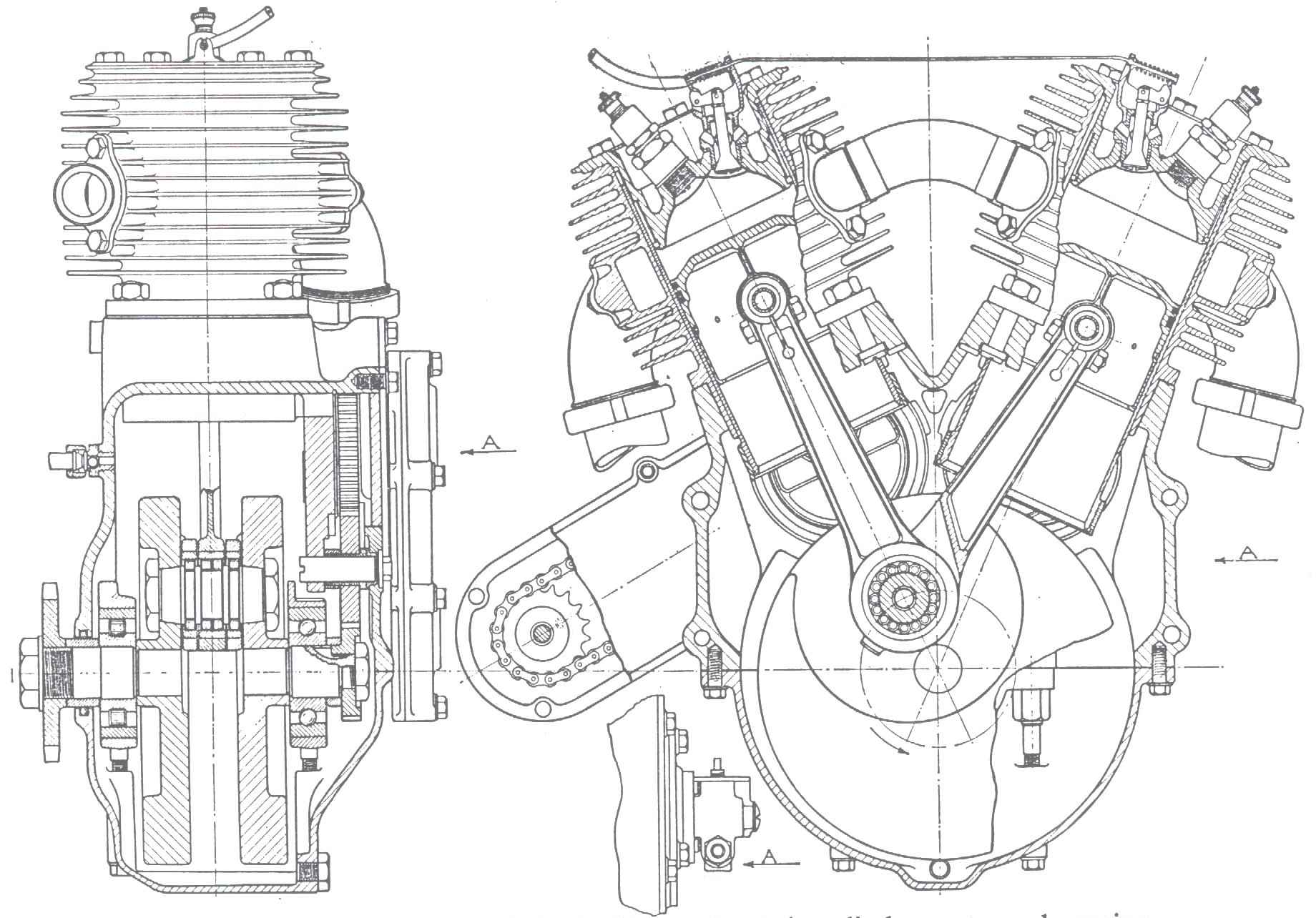

The Barr & Stroud engine was one of the most highly developed of the sleeve valve designs. It used a single sleeve which moved in a helical pattern, driven by a ball and socket arrangement much simpler and more reliable than the usual cranks and rods. The rotation of the sleeve helped lubrication and port timing.
The roller bearing fork and blade connecting rod, vertically split cases, and built-up crank were typical motorcycle design features for its day.
Note the compression release in the head for easier starting. Kick start, of course
The hemispherical combustion chamber was probably not optimal in shape, but was at least free of hot spots from the valve heads.
The chain drive to the rear was for the magneto. Most small engines used magnetos then; several companies made them, and it was an easy solution to the ignition problem.
The intake manifold appears to be designed for an updraft carburetor. Updrafts were also common in that era; they provided excellent atomization, smooth running, and good fuel economy.